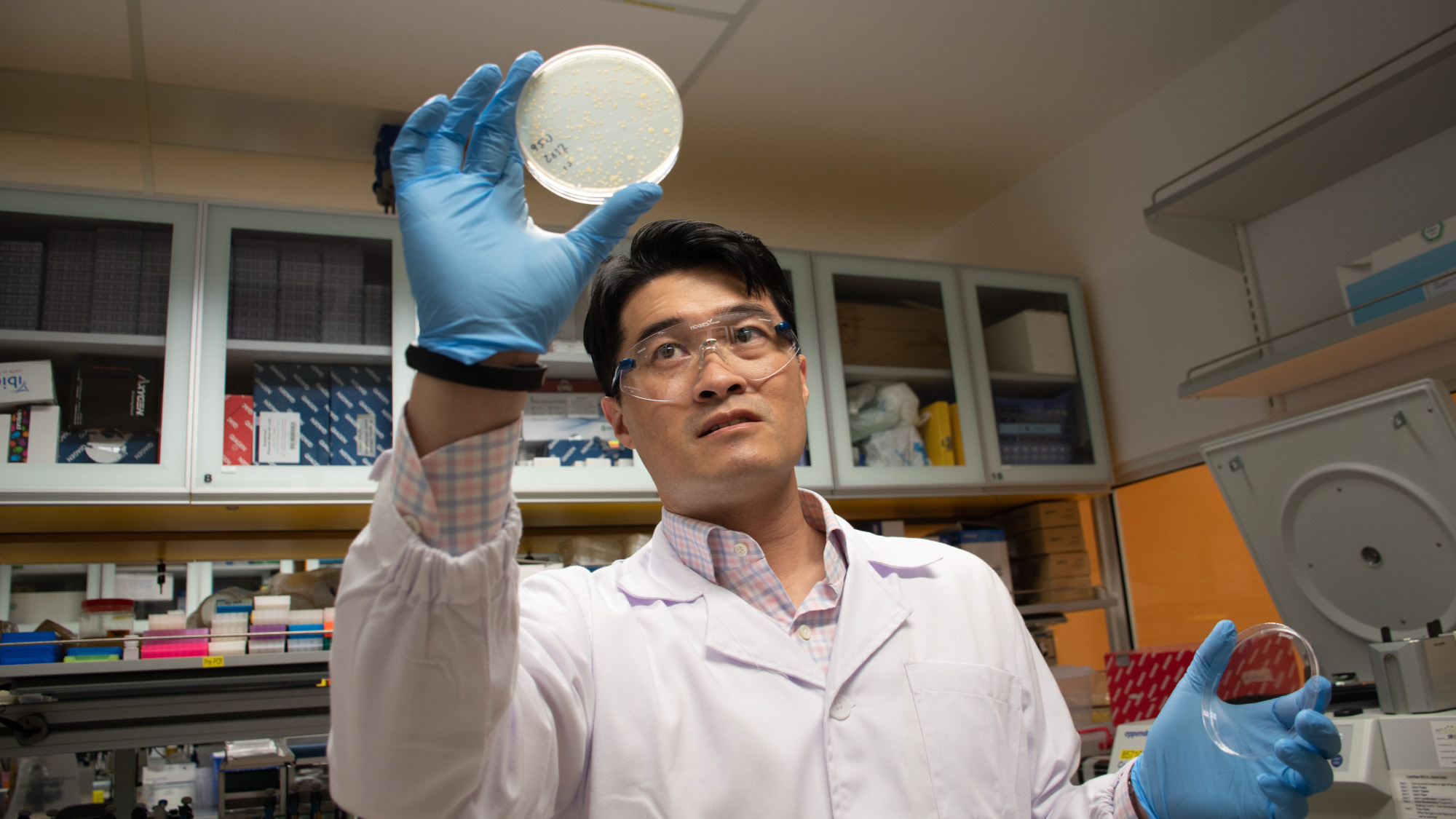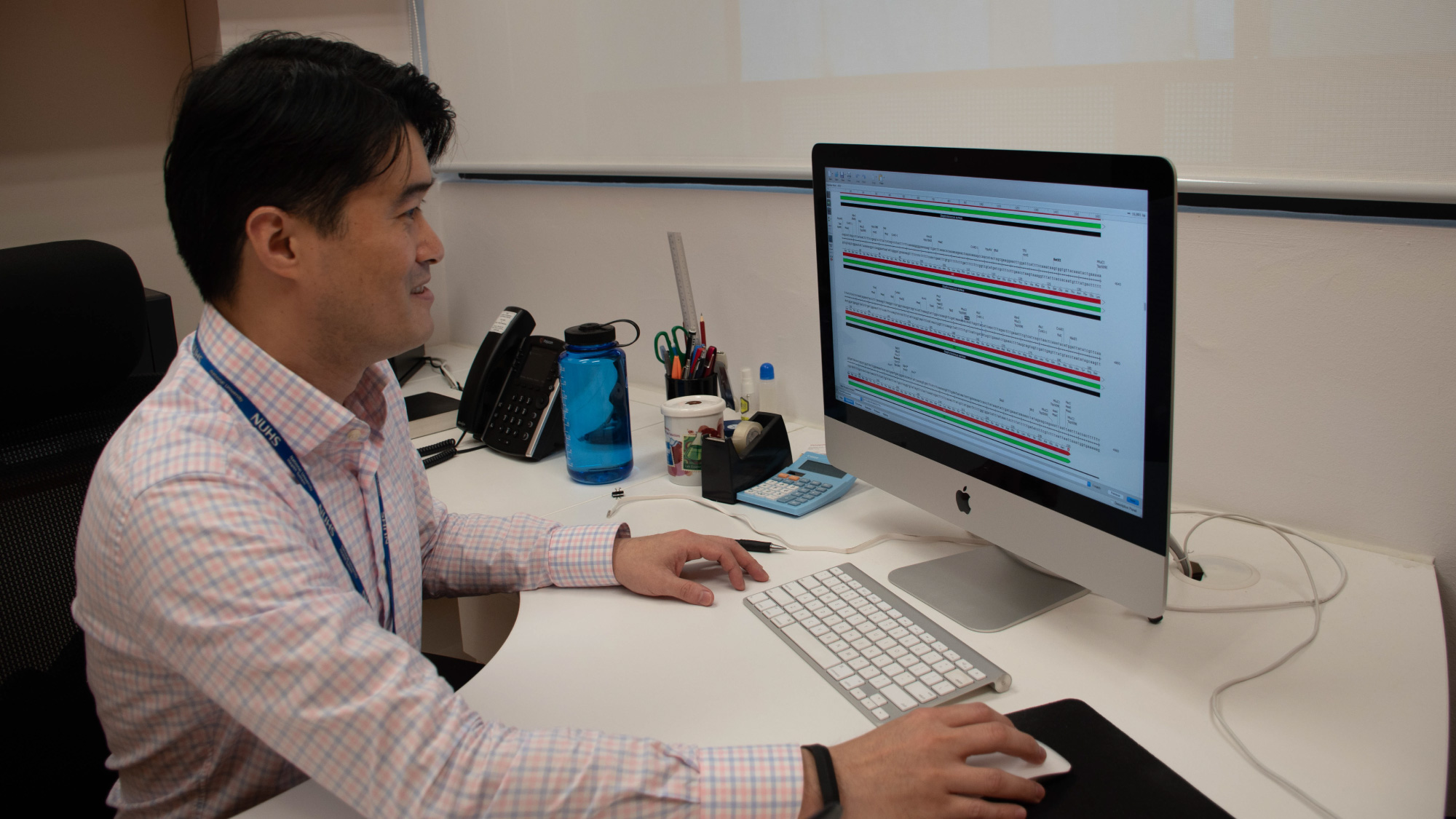The Data Whisperer
By Dr Khor Ing Wei,
Dean’s Office
I listen to the stillness of you,
My dear, among it all;
I feel your silence touch my words as I talk,
And take them in thrall.– D.H. Lawrence
The ability to notice the odd and unusual, then tease and pry secrets from seemingly innocuous bits and bytes of information is a hallmark of a good researcher.
Assistant Professor John Chen Yu-Shen doesn’t just review data. He listens to them and hears their whispers. While many scientists scan and peruse the reams of information mined and gleaned from their research, Asst Prof Chen goes further, paying close attention to data that is often deemed irregular or irrelevant and which may then be disregarded. His belief in keeping ears and eyes tuned for the unusual and the odd have paid off time and again. It also appears to run counter to scientific modus operandi: in the pursuit of new knowledge, scientific investigators have their hypotheses and grant’s aims firmly fixed in their minds and are focused on the results that are relevant to these objectives. While this can be a good strategy for funding renewal, it can also result in important discoveries being missed.
For Asst Prof Chen, embracing rather than avoiding data that does not make sense (at least initially) is the “secret sauce” that has led to three first-author (one corresponding) publications in Science. However, chasing after anomalies also leads to findings that upend long-held beliefs. His most recent paper in the premier journal, which was published online on 12 October 2018, elicted strong opinion, including one from an expert in the field. He dismissed Asst Prof Chen’s paper as an “artefact”.
The study generated such controversy because it overturned the conventional wisdom surrounding a process called genetic transduction, which refers to the transfer of genetic information between bacteria by bacteriophages (viruses that infect the bacteria). From the 1950s until now, genetic transduction was thought to involve just two mechanisms: generalised and specialised. Now, 60 years later, Asst Prof Chen showed that a third mechanism, which he called lateral transduction, is also at play in Staphylococcus aureus (S. aureus) bacteria1. What is even more stunning, this third mechanism appears to be at least 1000 times more powerful than the other two. Essentially, lateral transduction acts like a “broadband” Internet for bacterial genetic information, transmitting large sections of bacterial genes quickly, as opposed to the “dial-up” connections represented by generalised and specialised transduction.
Asst Prof Chen and his colleagues discovered this new mechanism by noticing that some phages displayed an abnormal life cycle. Specifically, a crucial protein that was usually required early in the life cycle was instead being produced much later in these phages. Intrigued, they investigated further and found that this abnormal life cycle allowed phages to transfer large sections of bacterial genes between bacteria at extremely high frequencies.
This revolutionary new mechanism could explain the incredible pace of adaptation of which S aureus is capable. In fact, the genes of different S. aureus strains often differ by as much as 20%, which is much greater than the difference between the genes of humans and mice2. As Asst Prof Chen puts it, “As master infective agents, bacteria have evolved very specialised sets of genes (involved in virulence or antibiotic resistance) by a slow-drip vertical inheritance process over the course of hundreds of thousands, or even millions of years. Lateral transduction allows bacteria to bypass this slow process, literally in a matter of minutes, by acquiring genetic elements from other bacteria.” It is this mass exchange of genes that generates the endless variety of bacterial strains that are ready to adapt to new and evolving environments. What was mere scary science fiction is now empirical reality.

Another of Asst Prof Chen’s Science papers, published in 2009, had similarly challenged the commonly accepted understanding of how phages transferred genetic information between bacteria. That paper showed that phages could transfer disease-causing (“pathogenicity”) genes between different genera of bacteria, rather than being limited to closely related bacteria, as previously thought3. When Asst Prof Chen first brought the idea for the project to his postdoctoral advisor, he was told it was a dead end and discouraged from pursuing it. Which is exactly what Asst Prof Chen did and succeeded eventually in demonstrating the concept.
A third paper in Science identified the first effector proteins involved in the reproduction of Legionella bacteria in protozoan hosts such as amoebae4. Standard approaches by every lab in the field had failed to identify the effector genes required for virulence in human macrophages. To Asst Prof Chen, this failure was the irregularity, because it seemed highly unlikely that so many labs would fail at an approach that had been so historically reliable for other pathogens.
This prompted him to think that either the effectors were redundant in function or different host cells were needed. As it turned out, both hypothesis were spot on.
“An element of luck is always involved, but in truth, these are just the very few successes out of hundreds of failures,” Asst Prof Chen says. He adds, “You have to be very thick skinned about failure in research.” Although he obviously knows how to stick with an idea and keep working at it, he thinks that researchers must also be “willing to cut your
losses and bring a project to a halt, if necessary, because “when you follow a mysterious data trail, you never know where it will lead to, but you can almost be certain that it will stray from your grant objectives, so you take a risk each and every time.”
Although these may appear to be contradictory skills, at their essence they are about letting the data be the guide, regardless of self-imposed or external pressures and the opinions of others. Are you listening?.
References
1. Chen J, Quiles-Puchalt N, Chiang YN, et al. Genome hypermobility by lateral transduction. Science. 2018;362:207-212.
2. National Human Genome Research Institute, National Institutes of Health. Why Mouse Matters. https://www.genome.gov/10001345/ importance-of-mouse-genome/
Updated July 23, 2010. Accessed December 10, 2018.
3. Chen J, Novick RP. Phage-mediated intergeneric transfer of toxin genes. Science. 2009;323:139-141.
4. Chen J, de Felipe KS, Clarke M, et al. Legionella effectors that promote nonlytic release from protozoa. Science. 2004;303:1358-1360.

